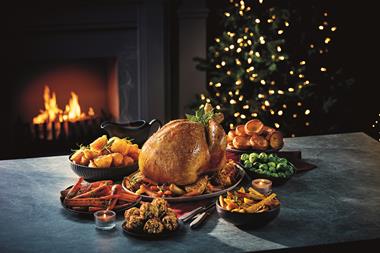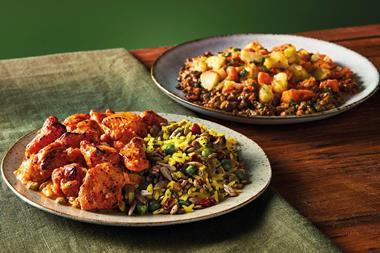Proof that this year's IFE is a truly international exhibition can be found in the Walk the World village and the ethnic and cultural foods attraction, which is new to the show this year.
The exhibition will feature companies from 43 different countries, 25 of which will be supported by national pavilions in the Walk the World village.
The village will be arranged geographically to allow buyers to literally walk the world of food and drink and discover what new products the companies have to offer.
As well as welcoming back countries that have been at previous shows, IFE will also play host to exhibiting companies from China, Korea, Egypt and Tanzania, which are all participating for the first time.
The village will be split into three sections - Europe, the Americas and Asia and Africa - and will act as a global arena for the international food and drink industry.
"IFE has a very important part to play in the global food and drink industry," says exhibition director Paul MacDonald. "We don't just see IFE as a four-day trade show. It is a facilitator of trade and education and its success in the past 30 years has been down to it highlighting market trends and innovation.
"About 50% of exhibitors at this year's show come from overseas and are looking to launch in the UK."
Greece will be the major force in the Walk the World attraction with the largest pavilion, comprising more than 100 companies and a number of Greek trade bodies.
The Hellenic Foreign Trade Board has launched an ambitious campaign to promote Greek products internationally.
Products on show will include Attiki Bee Culturing's range of traditional Greek halva, honey and fresh royal jelly and a range of feta and sheep's milk cheeses from dairy product specialist Kolios. Olives, olive oil, pitta breads and traditional Greek desserts will also be in abundance at the pavilion.
The Japanese pavilion is also expected to draw in the crowds, with 19 companies exhibiting some of the most unusual products on display.
These include beverage supplier Calpis's range of lactic acid drinks and Foodreams' range of frozen noodles and sushi.
The pavilion will also provide cooking demonstrations on how to use Japanese ingredients such as soy sauce, seaweed, wasabi, sake, green tea and the wheat-based spirit shochu. Ichoru Kubota, Michelin-starred head chef of London's Umu restaurant, will be demonstrating his Kyoto cuisine and Shingo Suzuki of London's Kobe Jones restaurant will be presenting his perspective on Californian-style Japanese cuisine.
Other international companies include Siam Winery, one of Asia's leading wine producers. The Thai-based company will be showcasing wines that have been specifically developed to complement Thai cuisine.
Meanwhile, Sri Lankan tea company Dilmah will be presenting its single origin tea. Visitors to the company's stand will be able to try its premium Ceylon, organic, orange pekoe and gold teas.
At the Swiss pavilion eight exhibitors
will be present. Switzerland's famous cheese will be the main focus for three of the companies, while another will be showcasing
Switzerland's other major export, chocolate.
There will also be representatives from Magagascar, Argentina, Bangladesh, the Caribbean, Hungary and Cyprus, to name a few.
Walk the World will not be the only place where visitors can get a taste of international cuisine. The ethnic and cultural food section, which is making its debut this year, will showcase the diversity of ethnic foods and is designed to embrace cultural diversity, innovation and new concepts including halal, kosher, Indian, Chinese, Thai, Mexican and Caribbean.
"Recent industry research suggests the ethnic and cultural food section of the show will be one of the most important," says Clive Beddall, member of the IFE advisory board.
"More shoppers are rejecting the traditional perception that UK consumers have conservative tastes and showing a real willingness to try something different. Ethnic food is now very much part of the average Brit's weekly menu and is set to remain so," he adds.
Products on display in the ethnic and cultural food section will range from traditional herbs and spices from Morocco to exotic fruits from Brazil.
Visitors to Anglo-Brazilian company Gaya Ecotrade's stand, for example, will be able to savour the delights of its acai berry products as well as try the juice of the caju fruit, found in north Brazil and expected to make a big impact in the UK this year.
Other exotic fruits on show from South America will be the cupuacu, which hails from the Amazon rainforest, and sour sop from northeast Brazil, which is not generally eaten raw but commonly blended with lime and sugar instead.
For buyers looking for more spice, Normades Moroccan Recipes will be bringing its extensive range of rubs, spice mixes and sauces to the show.
Its products include a charmoula spice mix, the most commonly used blend of spice in Moroccan cuisine, a fig and orange blossom chutney, messlala chunky olive paste and a prune and ginger tagine sauce. Normades will also provide tips on how to cook traditional Moroccan dishes such as fried aubergines and mechouia and twice-cooked preserved lemon chicken.
Port Saffron's Holy Cow! range will also be on show. The sauce range includes spicy Bombay ketchup, Himalayan hot garlic, Madrasi hot mint, spicy monsoon mango and spicy samosa sauce. n















No comments yet